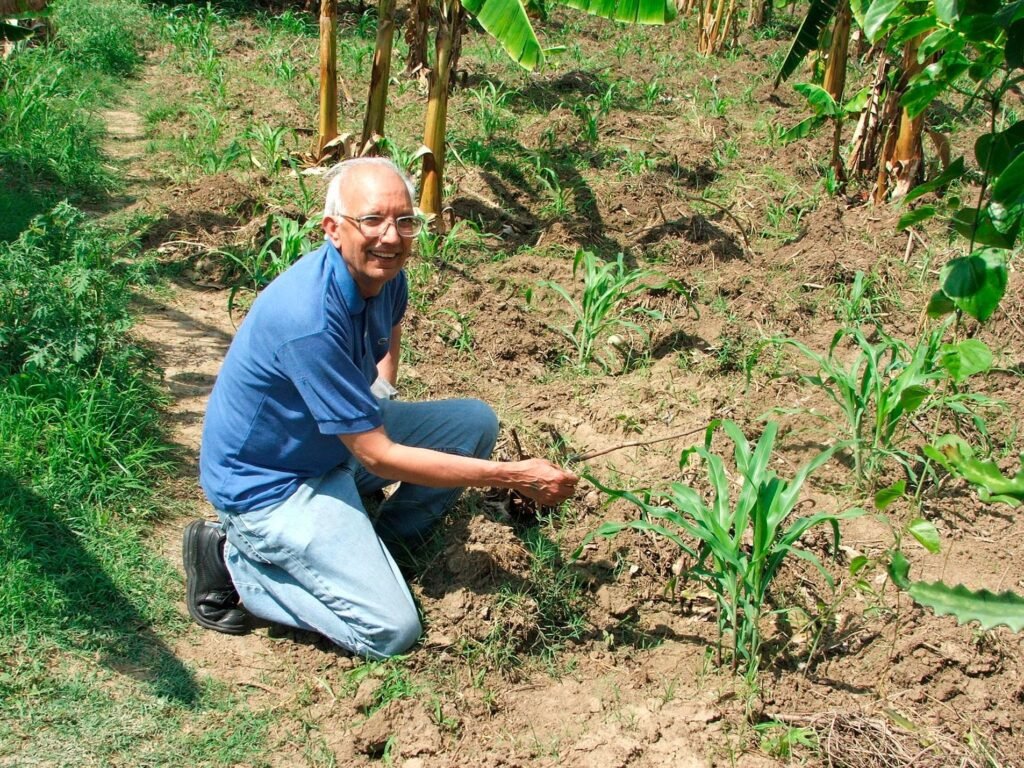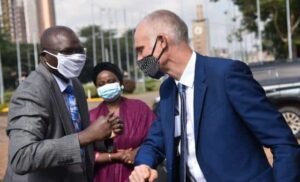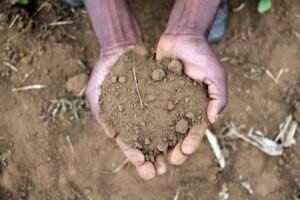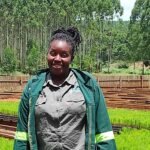
Rattan Lal
INDIA AND THE UNITED STATES
Dr. Rattan Lal, native of India and a citizen of the United States, will receive the 2020 World Food Prize for developing and mainstreaming a soil-centric approach to increasing food production that restores and conserves natural resources and mitigates climate change.
Over his career spanning more than five decades and four continents, Dr. Lal has promoted innovative soil-saving techniques benefiting the livelihoods of more than 500 million smallholder farmers, improving the food and nutritional security of more than two billion people and saving hundreds of millions of hectares of natural tropical ecosystems.
Biography
Dr. Lal serves as Distinguished University Professor of Soil Science and founding Director of the Carbon Management & Sequestration Center at The Ohio State University (OSU). From his humble beginnings as a refugee growing up on a small subsistence farm in India, his determination to learn and succeed in school propelled him to become one of the world’s foremost soil scientists. His pioneering research on the restoration of soil health in Africa, Asia and Latin America led to revelations that impacted agricultural yields, natural resource conservation and climate change mitigation. The agricultural practices Lal advocated are now at the heart of efforts to improve agriculture systems in the tropics and globally.
Lal’s soil-centric approach is based on the premise that “the health of soil, plants, animals, people and the environment is one and indivisible.” His research shows that growing crops on healthy soils produces more from less: more food from less land area, less use of agrochemicals, less tillage, less water and less energy. As soils also provide essential environmental services such as retaining rainwater, filtering pollutants and providing habitat for all manner of organisms, it is all the more important for societies to manage soils sustainably.
“I believe soil is a living thing. That’s what soil health means, soil is life. Every living thing has rights. Therefore, soil also has rights,” Lal said. “As long as you are consuming the natural resources – food, water, elements – coming from the soil, you owe it to soil to put something back, to give something back, whatever you can.”
Soil Essentials
Starting in 1970 at the International Institute of Tropical Agriculture (IITA) in Nigeria, Lal began addressing the issue of soil erosion and degradation in sub-Saharan Africa. He found that deforestation and agricultural cultivation exposed the soil to the harsh tropical climate, causing severe erosion. What’s more, removing the plant residue at harvest robbed the soil of nutrients, organic matter and organic carbon, making it harder and harder each season for farmers to grow a viable crop.
Lal spearheaded research demonstrating that soil organic matter and carbon is crucial to sustaining and enhancing the quantity and quality of food production. His findings are especially relevant in tropical regions of the developing world, where soil degradation has contributed to a downward spiral of poor soil health, low agricultural yield, enervated environment and, ultimately, weak resilience of rural livelihoods.
Lal’s investigation revealed that low soil carbon and organic matter combined with harsh tropical climates and nutrient-depleting farming practices posed a major barrier to reaching the soil’s productive potential. Under such poor growing conditions, improved, high-yielding crop varieties could not reach their full yield potential, even with the application of mineral fertilizers. Thus, several world regions, including sub-Saharan Africa, missed out on harnessing the full benefits of Dr. Norman Borlaug’s Green Revolution technology.
Lal’s research applies to more than one-third of the planet’s land area and 3.2 billion people (40% of the world’s population) affected by land degradation. Most soils in the world have lost 25-75 percent of their original soil carbon. Though the ideal proportion of soil carbon in the root zone is about 2 percent, many tropical soils now hold less than 0.1 percent. The global loss of topsoil due to unsustainable agricultural practices may have reduced overall earnings by 10 percent or more. Land degradation is projected to give rise to hundreds of thousands of soil refugees in Asia and Africa in the coming decades. And yet, soil is too often undervalued as a necessity for resilient communities.
“Soil is the basis of terrestrial life. All terrestrial life. Every living thing on the planet depends on soil. And yet this material which is hidden beneath the surface of the earth is underappreciated, not recognized,” Lal said.
Based on his thorough analysis of the factors affecting soil degradation, Lal began focusing on building soil physical health and the amount of organic matter contained in soil. He explored and transformed techniques such as no-tillage, cover cropping, mulching and agroforestry that protected the soil from the elements, conserved water and returned nutrients, carbon and organic matter to the soil. This in turn improved the long-term sustainability of agroecosystems and minimized the risks to farmers of droughts, floods, and other effects of a changing climate.
This focus on soil’s physical properties diverged from the conventional soil fertility strategy in the 1970s, which relied heavily on replacing soil nutrients through fertilizer application. Lal’s approach uniquely pointed out that the physical health of soil is, in fact, essential to enhancing irrigation and fertilizer efficiency; only 30 percent or less of irrigation water and fertilizer applied in depleted soils reached crops. Lal advocated that agriculturalists turn their attention from NPK to CNPK (carbon, nitrogen, phosphorus, potassium) as the most important soil elements for plant growth.
Lal’s work soon showed its worth in restoring soils and improving agricultural production in sub-Saharan Africa, but he did not stop there. He taught his methods to researchers from around the world who came to IITA and also traveled to Brazil, Colombia, India, Indonesia, Malaysia, Peru, Thailand and many other countries with tropical climates to practice and promote good systems for soil health. Lal identified and promoted land-use and soil management practices tailored to each region of the world to effectively restore soil health and avoid soil degradation. He developed region-specific soil guides for the adoption of conservation agriculture systems, alternatives to slash-and-burn agriculture and technologies for sustainable intensification of agroecosystems. By establishing long-term experiments throughout the tropics, he popularized the practice of conservation agriculture in regions of harsh climates and fragile soils.
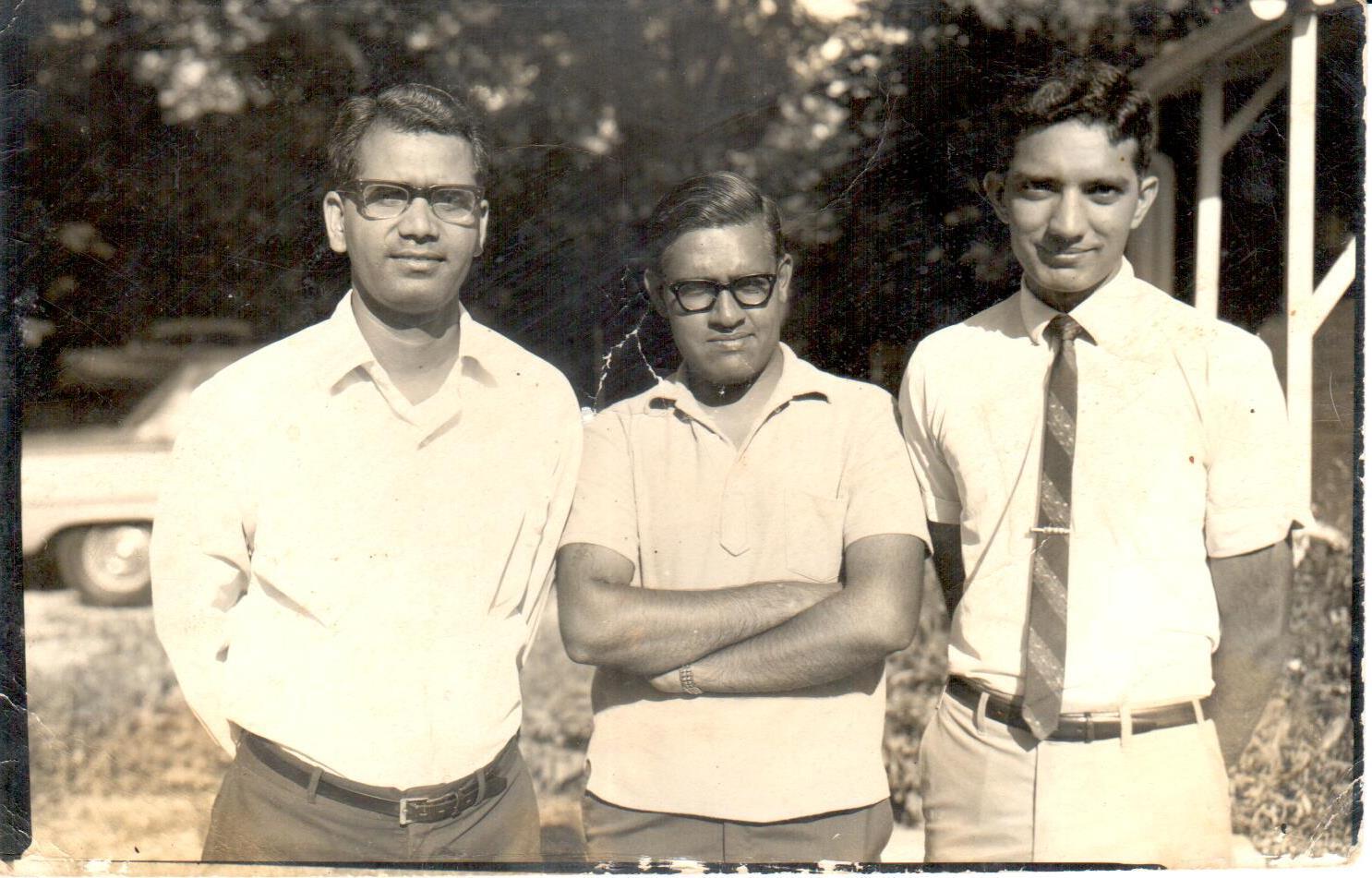 Rather than simply expanding the use of inputs (i.e. fertilizers, pesticides, irrigation, energy) or the land area used to grow crops, Lal’s experimentation and efforts presented sustainable agricultural intensification practices boosting food production while decreasing the amount of land and increasing the efficiency of the inputs used to cultivate it. Lal’s models indicate that restoring soil health can lead to multiple benefits by the year 2100, including more than doubling the global annual grain yield to feed the growing world population, while decreasing the land area under grain cultivation by 30 percent and decreasing total fertilizer use by half. Making this a reality will enormously benefit farmers, food consumers and the environment.
Rather than simply expanding the use of inputs (i.e. fertilizers, pesticides, irrigation, energy) or the land area used to grow crops, Lal’s experimentation and efforts presented sustainable agricultural intensification practices boosting food production while decreasing the amount of land and increasing the efficiency of the inputs used to cultivate it. Lal’s models indicate that restoring soil health can lead to multiple benefits by the year 2100, including more than doubling the global annual grain yield to feed the growing world population, while decreasing the land area under grain cultivation by 30 percent and decreasing total fertilizer use by half. Making this a reality will enormously benefit farmers, food consumers and the environment.
Carbon Counts
Through his innovative work on agricultural eco-intensification, Lal not only introduced the concept of soil physical health and resilience as an effective strategy for meeting the farming challenges of a changing climate, but also identified the promise soil holds for carbon sequestration efforts. The key to solving these issues, Lal found, is the carbon contained in soil. Soil contains 1,550 gigatons of organic carbon in soil organic matter, as well as 750 gigatons of inorganic carbon, which adds up to three times the amount of atmospheric carbon. Lal recognized this potential for soil to act as an enormous carbon sink to slow the increase of atmospheric carbon and stymie global climate change.
While a professor at OSU in the early 1990s, Lal co-authored the first scientific report showing that restoring degraded soils through increasing soil carbon and organic matter not only improved soil health, but helped combat rising carbon dioxide levels in the air by sequestering atmospheric carbon. His analysis showed that soils can sequester carbon at rates as high as 2.6 gigatons per year. When his research was published in Science in 2004, it garnered worldwide attention.
This breakthrough research transformed the way the world saw soils. They were now not only the foundation for increasing the quality and quantity of food and preserving natural ecosystems, but an important part of mitigating climate change as well.
“Soils of the world must be part of any agenda to address climate change, as well as food and water security,” said Lal. “I think there is now a general awareness of soil carbon, an awareness that soil isn’t just a medium for plant growth.”
Because of Lal’s leadership in linking soil carbon to climate change, three separate United Nations Climate Change Conferences adopted his strategy of restoring soil health as a means to sequestering carbon. This gave rise to the “4 per 1000” Initiative to increase soil carbon at an annual growth rate of 0.4 percent through implementing the conservation farming practices Lal had already adapted to regional conditions. Lal’s proposals on soil health closely tie into four of the 17 Sustainable Development Goals. In 2007, he was among those recognized with a Nobel Peace Prize Certificate for his contributions to the Intergovernmental Panel on Climate Change (IPCC) reports when the IPCC was named co-recipient of the Prize.
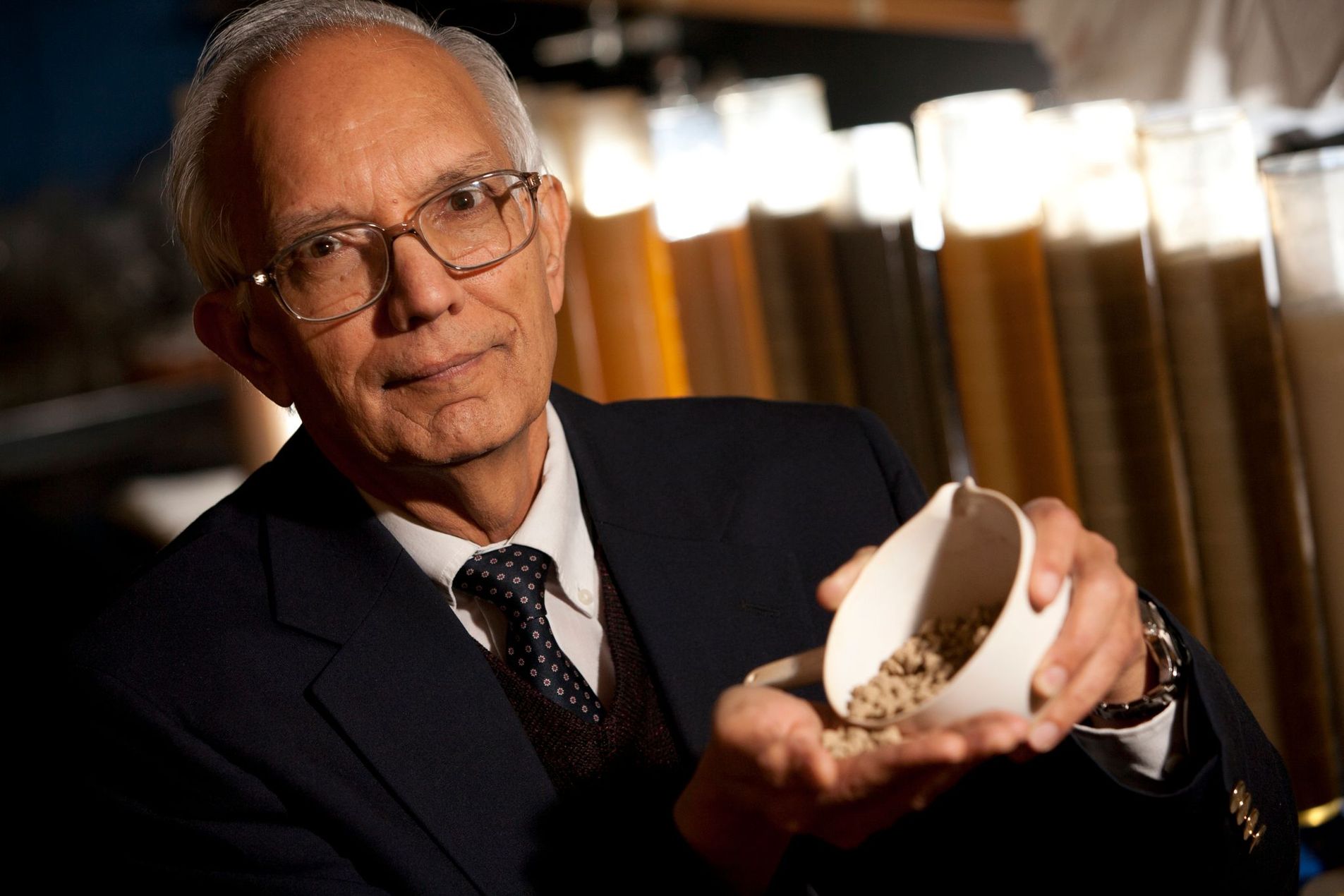 While Lal is one of the most prolific agricultural scientists with more than 100,000 citations of his vast corpus of published work, he recognizes the importance of translating science into action. He is acutely aware of the necessity of working with national, international and governmental institutions in his relentless quest to translate research into impact at the community and farmer level. A consummate communicator, he served as president of four international professional societies including the International Union of Soil Sciences and is a member of many more; developed strong channels of communication with policymakers at national and international levels; mentored 350 students and researchers from around the world; collaborated with industry leaders to reach their goals for reducing carbon emissions; made more than 500 keynote presentations; and visited 105 countries to promote the soil-centric approach to advancing food security. He is credited as one of the most influential agricultural researchers by peer review organizations around the world.
While Lal is one of the most prolific agricultural scientists with more than 100,000 citations of his vast corpus of published work, he recognizes the importance of translating science into action. He is acutely aware of the necessity of working with national, international and governmental institutions in his relentless quest to translate research into impact at the community and farmer level. A consummate communicator, he served as president of four international professional societies including the International Union of Soil Sciences and is a member of many more; developed strong channels of communication with policymakers at national and international levels; mentored 350 students and researchers from around the world; collaborated with industry leaders to reach their goals for reducing carbon emissions; made more than 500 keynote presentations; and visited 105 countries to promote the soil-centric approach to advancing food security. He is credited as one of the most influential agricultural researchers by peer review organizations around the world.
Lal is a trailblazer in soil science with a prodigious passion for teaching that improved soil health enhances agricultural production, improves the nutritional quality of food, restores the environment, and mitigates climate change. In this approach, he reconciled two seemingly opposing elements: the need for increased food production with the necessity of restoring soil, water and air quality.
“Normally, people think of agriculture as the problem,” Lal said. “But with me, I want it to be the solution.”
From Subsistence to Soil Scientist
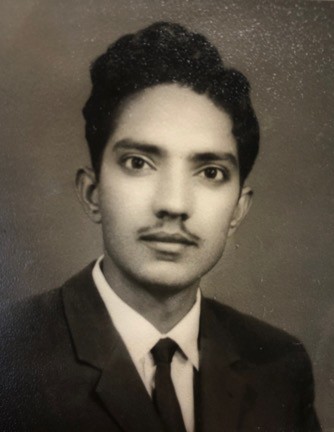 Rattan Lal estimates he was born in 1944 in the small farming village of Karyal in West Punjab, India. In 1947, when India gained independence, Lal’s Hindu family found themselves in the newly partitioned Pakistan. They departed and resettled as refugees in Rajaund, Haryana, India, about 100 miles northwest of Delhi.
Rattan Lal estimates he was born in 1944 in the small farming village of Karyal in West Punjab, India. In 1947, when India gained independence, Lal’s Hindu family found themselves in the newly partitioned Pakistan. They departed and resettled as refugees in Rajaund, Haryana, India, about 100 miles northwest of Delhi.
In Rajaund, Lal’s father farmed a much smaller plot of land of only a few acres, using the traditional farming methods that rely on manual labor and oxen to raise wheat, chickpeas, rice and sugarcane. Lal looked after the family’s small herd of cattle.
Lal first became curious about soil through his experiences with subsistence farming as a boy. He recalls watching his father, uncle and brother plowing the fields with oxen in temperatures reaching above 45 Celsius (>110 °F). The ground was very hard–all the crop, including the straw, was removed at every harvest; nothing was returned to the land. Lal wondered at the time about the difficulty of plowing the land, and why plowing was even needed.
Lal had the chance to study soils more upon entering Punjab Agricultural University in Ludhiana after earning a scholarship for graduating at the top of his class from his two-room school in Rajaund in 1959. As neither of his two older siblings were ever able to attend school, Lal felt as though he studied for them as well, motivating him to study hard. He completed his high school assignments by the light of a kerosene lamp in the evening. His first year of college, he ran four miles to school every morning. His application and fortitude was recognized by his soil science professor and mentor, Prof. D.R. Bhumbla, who encouraged Lal to continue his studies at Prof. Bhumbla’s own alma mater, The Ohio State University.
At the time, attending school in the United States hardly seemed possible, but after earning his M.Sc. at the Indian Agricultural Research Institute in Delhi, Lal went on to do just that. In 1965, he boarded a plane for the first time and traveled more than 7,000 miles to OSU to pursue his Ph.D. under the mentorship of Prof. George S. Taylor.
After graduating from OSU in 1968 with his Ph.D. in Soils, Lal traveled to the University of Sydney as a postdoctoral researcher. Soon after his arrival in Australia, he received an invitation from Dr. Herb Albrecht, whom he had met at OSU and who now served as the Director General of the newly created International Institute of Tropical Agriculture. Dr. Albrecht charged Lal with creating a soil physics laboratory in Nigeria that would be so outstanding that Africans would not need to study elsewhere. In December 1969, Lal traveled to Ibadan, Nigeria, to take up the post of Soil Physicist at IITA. Lal and his wife, Sukhvarsha S. Lal, remained in Nigeria for eighteen years, where their four children were born and they weathered the end of a civil war and three government coups.
During his nearly two decades at IITA, Lal traveled all over the world studying tropical soils. Everywhere he explored, he discovered differences – different cultures, different languages, different climates – but he also found that farmers faced the same problems as those he had experienced as a child. Smallholder farmers constantly struggled with problems stemming from soil degradation. These experiences awakened him to the importance of considering the social and cultural issues in farmers’ lives as well as the agricultural and environmental.
“If soils are not restored, crops will fail even if rains do not…and humanity will suffer even with great scientific strides. Political stability and global peace are threatened because of soil degradation, food insecurity, and desperateness,” said Lal. “For future generations, it is very important that soil resources must be protected, preserved, restored and enhanced. That is where the future of humanity lies.”
In 1987, Lal returned to The Ohio State University. There he established the Carbon Management & Sequestration Center in 2000. At OSU, he has mentored 112 graduate students, 54 postdoctoral researchers, 10 research scientists and associates, and 175 visiting scholars, who all became soil ambassadors working to restore the world’s soils.
Prior accolades recognizing Dr. Lal for the exceptional energy and insight he applies to the crusade for conservation around the world include the Japan Prize (2019), the GCHERA World Agriculture Prize (2018), the Glinka World Soil Prize (2018), the Liebig Award (2006), and in India, the Swaminathan Award (2009) and the Norman Borlaug Award (2005).
On one of his last trips to India, Dr. Borlaug himself presented Lal with the Norman Borlaug Award honoring outstanding Indian researchers in agriculture. Lal epitomizes Dr. Borlaug’s philosophy that science is meaningless if it does not serve humanity. Lal’s efforts to extend the Green Revolution by advancing soil health makes him a laudable 50th Laureate of the World Food Prize.
Source: https://www.worldfoodprize.org/en/laureates/2020_lal/

